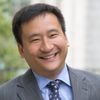There are no Asians in Asia. But there also are only a few Asian Americans in America. Pan-Asian identity remains rare, fragile. Yet it affirms the ideals of a diverse democracy, because it builds bridges.
As I prepare to teach a course on Asian Americans, I have to admit to myself that even though Asian Americans are said to be the fastest-growing racial group in the United States, not all who would be designated as such would be enthusiastic about the label. They divide among themselves. Any of us who wishes to promote “Asian American” should be aware of the reality. More than one Asian American would rather be somebody else. They are keen on neither the “Asian” nor the “American.” Both aspects represent assimilation to those who are ethnic diaspora, proudly and permanently.
Overseas, Asians are as common in Asia as Europeans in Europe. That is to say most recognize themselves more specifically. “Asian” is associated with imperialist ambition and idealistic abstraction. People call themselves first Chinese, Japanese, Korean, Filipino, Indian, Pakistani, and so on. They would list “Asian” after many other adjectives. They emphasize the tribalism of province, clan, village, faith, and dialect, perhaps family networks that bind kin. They may be Malaysian Chinese or Vietnamese Chinese or Taiwanese who would distinguish themselves from mainland Chinese. These seem natural names. “Asian” is alien.
The truth is that there is no love lost among Asians in a region defined by outside observers. The ancestors of Asian Americans have been at war each against the next. They have committed injustice against one another through colonialism, and visited violence on themselves in civil wars, that exceeds the bias following their migration to the other side of the Pacific. A comparison of suffering produces no winners, but the continued desire to leave Asia for America (or Australia or Canada), even in the face of hostility there, implies the assessment of what would be preferable. The thinking seems to be that it would be better to take the chance on American opportunity, over the certainty of Asian predestiny. A Southeast Asian refugee who takes to the seas must be convinced beyond desperation. The future of the family depends on completing the journey.
Once they settled in the New World, strangers from a different shore in the words of the leading historian of the communities (the late Ronald Takaki), they became Asian American only thanks to sustained effort. The Japanese Americans who came after Chinese Americans had been excluded in acts of open bigotry, for example, sought to show their neighbors how they were different from their predecessors. The issei (first-generation) men recruited “picture brides” to establish families who observed the Sabbath. They avoided bachelor vices such as gambling and opium smoking. They encouraged agricultural businesses as less threatening.
The lack of sympathy was reciprocated in turns. Following Pearl Harbor, as Japanese Americans were rounded up to be sent to internment camps, deemed enemy aliens even if native-born citizens, many Chinese Americans put up signs in their storefronts declaring preemptively, “We hate the Japs more than you do.” They sought to fight for America as well as China against Japanese who had been aggressors toward both. To an even greater extent, the few Korean Americans there were distanced themselves from the Japanese Americans despite the irony of being classified as if Japanese. Their ancestral homeland had been annexed as a colony in the earliest expansion of the Rising Sun’s empire.
The affiliation of Asian Americans was motivated by the need for mutual defense and the hope of political empowerment. “Asian American” was invented by scholar Yuji Ichioka circa 1968, that epochal year of global revolution, as an aspirational term. “You all look alike” Asians were accustomed to being told, in the recurring theme of mistaken identity that started with bullying in the schoolyard, the chants of that ditty “Chinese, Japanese, dirty knees. . .” The murder of Vincent Chin in Detroit in 1982, a Chinese American attacked by autoworkers who believed him to be a Japanese foreigner, became exemplary because it represented shared themes of Asian American experiences. He is the ghost haunting Asian Americans, since his killers were never brought to justice.
“Asian American” being artificial, its advocates had to teach themselves what it consisted of. In the curriculum that introduces civic culture, from kindergarten on, we were not exposed to Asia much less Asian America without seeking out the subjects. Asian immigrants and their American descendants were absent or they were described as sojourners deserving of their mistreatment. At best there might be a reference to the transcontinental railroad, the western half of which was built by Chinese laborers not invited to the Golden Spike ceremony that achieved the grandiose goal of “Manifest Destiny,” a white, Christian continent integrated from coast to coast. A “Chinaman’s chance” was all the workers had enjoyed, taking risks that others would have refused, until they were laid off. Even in textbooks that alluded to their accomplishment, there was no mention of their eventual fate. They simply disappeared from the page thereafter, as if that was the proper course of action.
The Asian American movement, such as it is, reflects the yearning to belong. Other than those who participated, hardly anybody is aware that “Yellow Power” flourished in the San Francisco Bay Area briefly, during the Summer of Love. Its proponents, who had a folk rock band and underground magazines, were inspired by “Black Power.” My parents were neither “Asian” nor “American.” I learned it from books. That is no criticism of my parents nor of the books.
While detractors claim that “Asian American” divides, or with a European framing “balkanizes,” they fail to appreciate how it unites. To be Asian American is to join together. It is to assert an Asian-ness possible only in America.
